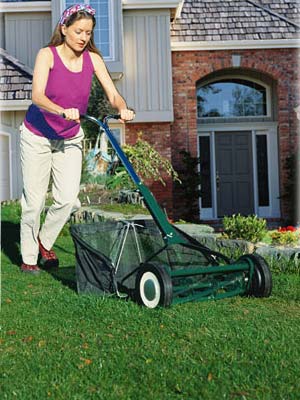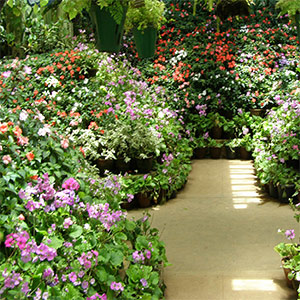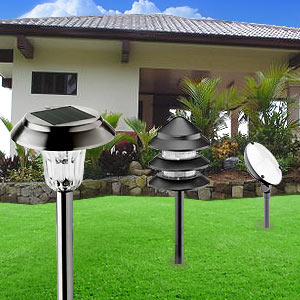Lawn Maintenance Tips

Lawn maintenance boils down to keeping your lawn healthy and attractive. Watering, mowing and removing the debris will keep the lawn in a reasonably good condition. A great looking lawn requires conscious maintenance so as to retain its natural beauty. In order to retain the velvet emerald appearance, you should adhere to good lawn practices. A good-looking, well-maintained lawn is an object of admiration, owner's pride and neighbor's envy.
Your lawn requires your care and attention. A lush green lawn is not only a delight for the eyes. Oxygen conversion, absorption of air borne pollutants, erosion control, air and surface cooling are the other healthy benefits a lawn provides its owner.
If you are in the pursuit of lawn maintenance tips to safeguard your lawn from weed growth, insect attacks and disease-spread, use this lawn health care guide. Conscientious effort promises that perfect patch of lawn throughout the year, irrespective of change in season.
Good Mowing Practice
How much of grass should be mowed? Answer to this determines the following.
- Amount of food the lawn can prepare by way of photosynthesis
- Amount of water and time taken for maintenance
- The look of the lawn
Provide enough foliage fully exposed to the sun to support the process of photosynthesis. Too short a length hurts the grass and results in water wastage. Take care that you do not remove more than one-third of leaf blade per mowing. Mow the grass when it is dry.
- Mow cool season grasses at 2.5 to 3.5 inches high
- Mow warm season grasses as low as 5 inches
Adequate Watering
The amount of water required for the lawn depends on the season and soil type. Make use of this simple calculation to determine the number of minutes to water the lawn. First determine the depth of the moistened soil in inches. Divide this by 120. Once you determine the length of watering period, the same can be followed for all seasons. In order to minimize evaporation and water wastage, water the lawn in the early mornings. In case of abundant rain during the day or night, be assured of adequate water supply for up to two weeks. For a medium sized lawn, you can choose the best sprinkler device oscillating, fountain type or permanent sprinklers. Infrequent heavy watering is preferred to small daily doses.
- Do not water lawn at night. This may lead to fungus and insect development.
- Dichondra, Zoysia and Bermuda grasses need 2 inches depth of water.
- Merion, Kentucky Blue, ryes and red fescues need 3 inches of water.
Proper Fertilizing
If you care to make your lawn stronger, pest and disease resistant consider fertilizing the lawn. It provides necessary nutrients required by the lawn to remain plush green. However, it is essential to analyze the type of fertilizer that is required for your lawn. This can be done after testing the soil for its inherent nutrient content. Based on the soil test recommendation, you can determine the appropriate fertilizer. Experts recommend fertilizing lawns in spring or fall to reap total benefits.
- Nitrogen aids leaf growth and color
- Phosphorous is necessary for strong root growth and development
- Potassium boosts stem growth and disease resistance
Right weed control
You cannot totally avoid weeds for they germinate and grow during all seasons of the year. Yet, experts recommend using weed killer in the early spring and fall. Choosing the right weed control product is critical to good lawn maintenance. Pre-emergent weed control and post-emergent weed control are the two types of weed control products that are widely used.
In order to control weeds before they germinate, pre-emergent weed control products are used. On the other hand, post-emergent weed control products kill full-grown or existing weeds. It is essential to understand the status of weeds, whether they are yet to germinate or already grown to determine the right type of weed control. A lawn maintenance tip is to go for a 'weed and feed' product that works as a weed control product as well as a fertilizer for the lawn. However, the flip side of using this is that young seedlings, if any, may not be able to withstand the weed control product.
- Check day temperature, not above 85 degrees for weed control to be effective.
- Choose a still day that is not windy to prevent drifting of chemicals.
Aeration to breathe
Lush green lawns are put to a variety of uses such as play, sports activities or a barefoot evening stroll. With time lawns age and soil compaction may occur. The pore space within the soil that holds air is reduced with compaction. The soil suffers as it does not receive required amount of oxygen, water and nutrients. Root growth is terribly affected. The results are poor top growth and overall health of lawn starts deteriorating. Annual machine aeration during spring or autumn helps lawn to breathe healthily.
- Make sure soil is moist, not too wet nor too dry
- Lawn aeration by hand is advantageous for small lawn
- Water lawns two days prior to aerating
- For good coverage, aerate lawns in two different directions
Another lawn maintenance tip is to rake your lawn to remove accumulated thatch so as to feel the crisp lawn under your feet. Trim the edges of your lawn to give a neat appearance to the entire garden.
Top of the Page: Lawn Maintenance Tips
Tags:#lawn maintenance #lawn maintenance tips

Eco Friendly Homes
Garden Maintenance
Organic Gardening
Vegetable Garden Layout
Xeriscaping
Hydroponics Gardening
Feng Shui Garden
Ornamental Plant
Container Garden
Growing Succulents Indoors
Landscape Design Idea
Herb Garden Design
Window Garden
Lawn Mowing
Lawn Maintenance Tips
Orchid Care
Bonsai Tree
Cactus Plant
Thanksgiving Cactus
Rock Garden
Gardening Accessories

Bird Feeder
Leaf Blower
Solar Bird Bath
Lawn Sprinkler System
Outdoor Garden Furniture
Garden Fountain
Butterfly Garden
Electric Lawn Mower
Garden Pond
Landscaping

Landscaping
Landscape Lighting
Outdoor Canopy
Solar Garden Lights
Garage Plan
Home Improvement
Home Furnishing
Home Improvement Catalog
Feng Shui
Top of the Page: Lawn Maintenance Tips
Popularity Index: 101,062

